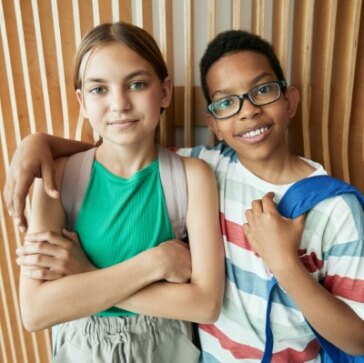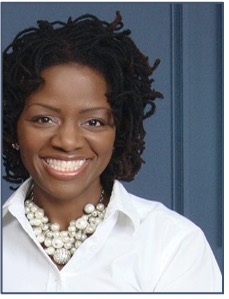
There is an African proverb that wisely says:
If you want to go fast, go alone. If you want to go far, go together.
This past November I, along with colleagues from DEYA (Detroit Excellence in Youth Arts) and MAEIA (Michigan Arts Education Instruction and Assessment) presented at the Michigan Arts Education Association fall conference in Grand Rapids. Our topic was Harnessing the Power of Collective Impact. Perhaps you’ve never heard of this concept, or maybe you’re knee deep in the groundwork of a collective impact initiative, either way, let’s dig in.
The Council of Nonprofits defines collective impact as “an intentional way of working together and sharing information for the purpose of solving a complex problem.” Successful collective impact initiatives typically have five conditions that together produce alignment and lead to powerful results:
- a common agenda
- shared measurement systems
- mutually reinforcing activities
- continuous communication
- backbone support organizations
When I was first introduced to DEYA, whose mission states, “DEYA harnesses collective action to build the capacity of Detroit’s youth arts ecosystem and deepen investment in the sector, making youth arts opportunities in Detroit more equitable, inclusive, accessible, and sustainable,” I was hooked. Of course, this makes sense to the Detroit arts sector, because every young person deserves the opportunity to be exposed to high quality arts opportunities. The same one that I got my start in as a wide eyed eight-year-old being handed a piece of compressed charcoal for the first time at Young Artists & Company, Incorporated in the late eighties.
Since then, I’ve grown up, lived in other parts of the country, taught hundreds of students, worked in other nonprofit organizations, and intentionally returned to Detroit after years of growth elsewhere because in my soul I wanted to attempt to recreate what Detroit had given to me all those years ago, access to the arts. What I know from experience and from conversations with folks who have worked in and enjoyed the Detroit arts scene for generations is that Detroit has been a formidable leader in the arts disciplines. I didn’t know how coming home to work in the sector would show up or what it would look like for me, but the opportunity to participate in bringing the arts sector to the forefront through collective impact was certainly a draw.
Having our finger on the pulse of the arts sector, including arts education and creative youth development, my DEYA partner and I, like many working in the youth arts sector, saw access, equity and sustainability as the overarching complexity of challenges within the Detroit market. The question then becomes what do we do about it and how?
MAEIA has cultivated a network of doers around the state of Michigan to support common goals surrounding artistic assessment in each of the disciplines. The nonprofit organization, Ingenuity, in Chicago does an exceptional job of facilitating intricate webs that support the work and common goals of arts organizations, arts educators and teaching artists. Many have adopted the theory of collective impact to change and/or improve systems that cast a wider net of information and access, ultimately supporting the greater good.
Seeking to learn from those entrenched in this work and to initiate collective movement toward a community identified common goal, DEYA used phase 1 of the collective impact model and embarked on a needs assessment to better understand the barriers and triumphs of the creative youth development sector within the greater Detroit arts ecosystem. A bit of what we’ve learned is that there have been isolated yearnings by organizations to step off the hamster wheel of going it alone. Considering the capacity and required commitment of small to mid-sized nonprofits who are committed to the daily work of supporting and growing their own organization, we also learned that the necessary work of collective impact can seem daunting.
What DEYA understands about collective impact, in its inherent communal nature, is that it is indeed the twenty-first century version of “going together.” And as high as the mountain may be to climb, we hope to build the fortitude that a third party/support organization requires to build a solid foundation and we will stand in gaps to support the youth arts sector that has so strongly shaped the Detroit landscape.
After conducting over 50 interviews with the creative youth development community, DEYA has gotten about the business of analyzing the information to look for themes that highlight opportunities, ideas, needs and barriers. In the coming weeks we will be sharing with the community what we’ve discovered so far and looking to the community to identify the most pressing issues to pursue. While we have made our greatest attempt to look for and talk with every youth arts related organization that we could find, we know we may have missed some. If you are an organization interested in knowing more about DEYA’s efforts and/or feel moved to support the journey, we encourage you to reach out at 313deya@gmail.com.
Let’s go farther together.
Editor’s Note: MAEIA is also leading the way in collective impact practices. In collaboration with the Michigan Arts and Culture Council, we have been planning the development of Regional Arts Education Networks throughout the 10 regions of the state. With an exceptional model by the Great Lakes Bay Region, and in recognition of the nuances of each region, this collective will streamline communication and professional learning efforts related to arts education resources, funding, and inter-organizational collaboration. Stay tuned for more details on how you can get involved in the 2022-2023 academic year. We must work together to create the impact we want to see for Michigan’s youth in and through the arts.
_________________________________________________________________________________________________
 Nafeesah Symonette, MA, is a former visual arts educator with thirteen years teaching experience and over twenty years working in and through the arts. She is an arts education consultant focused on the intersection of arts education and culturally responsive teaching and is on faculty at Oakland University and Eastern Michigan University. Most recently she joined Detroit Excellence in Youth Arts (DEYA) as Co-Founder and Network Coordinator for Arts Education, Research and Advocacy.
Nafeesah Symonette, MA, is a former visual arts educator with thirteen years teaching experience and over twenty years working in and through the arts. She is an arts education consultant focused on the intersection of arts education and culturally responsive teaching and is on faculty at Oakland University and Eastern Michigan University. Most recently she joined Detroit Excellence in Youth Arts (DEYA) as Co-Founder and Network Coordinator for Arts Education, Research and Advocacy.
Click here for a Printer friendly version of this article.

Leave a Reply
You must be logged in to post a comment. Don't have an account? Register Here.